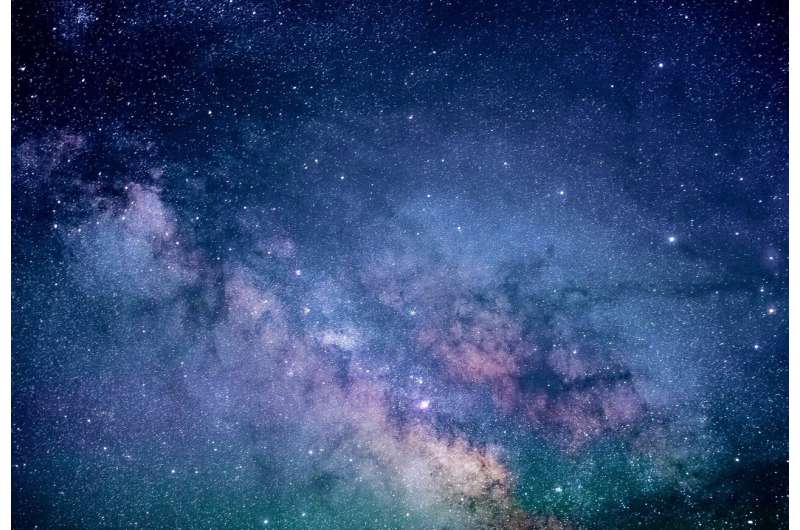Credit: CC0 Public Domain
Breakthrough Listen—the initiative to find signs of intelligent life in the universe—announced today a new collaboration between Breakthrough Listen and the VERITAS Collaboration in the search for technosignatures, signs of technology developed by intelligent life beyond the Earth. Joining Listen's ongoing radio frequency survey and spectroscopic optical laser survey, VERITAS (the Very Energetic Radiation Imaging Telescope Array System) will search for pulsed optical beacons with its array of four 12-meter telescopes at the Center for Astrophysics | Harvard & Smithsonian, Fred Lawrence Whipple Observatory in Amado, Arizona.
VERITAS is the world's most powerful telescope array for studying high energy astrophysics with gamma rays. It detects gamma rays coming from space by looking for the extremely brief flashes of blue "Cherenkov" light they create when they hit the top of the Earth's atmosphere.
VERITAS will look for pulsed optical beacons with durations as short as several nanoseconds. Over such timescales, artificial beacons could easily outshine any stars that lie in the same direction on the sky. The use of all four telescopes simultaneously allows for very effective discrimination against false positive detections. The VERITAS Collaboration has previously published observations of the mysteriously dimming Boyajian's Star in search of such optical pulses (iopscience.iop.org/article/10. … /2041-8205/818/2/L33). The new program of VERITAS observations will provide complementary searches for optical pulse signatures of many more stars from the primary Breakthrough Listen star list.
"When it comes to intelligent life beyond Earth, we don't know where it exists or how it communicates," said Yuri Milner, founder of the Breakthrough Initiatives. "So our philosophy is to look in as many places, and in as many ways, as we can. VERITAS expands our range of observation even further."
Breakthrough Listen's search for optical technosignatures with VERITAS will be led by Prof. David Williams of the Santa Cruz Institute for Particle Physics and Department of Physics at the University of California, Santa Cruz, and Prof. Jamie Holder of the Department of Physics and the Bartol Research Institute at the University of Delaware, in collaboration with the Listen team at the University of California, Berkeley's SETI Research Center (BSRC, seti.berkeley.edu), led by Dr. Andrew Siemion.
"Breakthrough Listen is already the most powerful, comprehensive, and intensive search yet undertaken for signs of intelligent life beyond Earth," noted Dr. Siemion. "Now, with the addition of VERITAS, we're sensitive to an important new class of signals: fast optical pulses. Optical communication has already been used by NASA to transmit high definition images to Earth from the Moon, so there's reason to believe that an advanced civilization might use a scaled-up version of this technology for interstellar communication."
"Using the huge mirror area of the four VERITAS telescopes will allow us to search for these extremely faint optical flashes in the night sky, which could correspond to signals from an extraterrestrial civilization," remarked Prof. Holder.
If a laser comparable to the most powerful lasers on Earth (delivering about 500 terawatts in a pulse lasting a few nanoseconds) were situated at the distance of Boyajian's Star and pointed in our direction, VERITAS could detect it. But most of the stars in the Listen target list are a factor of 10—100 times closer than Boyajian's Star, meaning that the new search will be sensitive to pulses a factor 100—10,000 times fainter still.
"It is impressive how well-suited the VERITAS telescopes are for this project, since they were built only with the purpose of studying very-high-energy gamma rays in mind," observed Prof. Williams.
Provided by American Astronomical Society
























